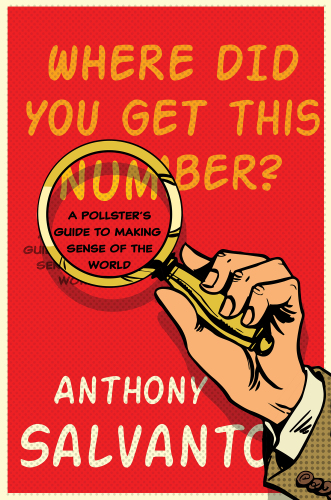
Where Did You Get This Number?
A Pollster's Guide to Making Sense of the World
- اطلاعات
- نقد و بررسی
- دیدگاه کاربران
نقد و بررسی

June 18, 2018
Salvanto, the director of elections and surveys for CBS News, does an admirable job of explaining how polls actually work and how polling data is compiled in this approachable overview. Salvanto plainly states polls aren’t concerned about people as individuals; they are about trying to find out what people share (or don’t share) with others concerning a particular topic. While he goes into great detail explaining how samples are put together and participants are contacted, the real meat of the book is in the details of particular polls and their findings. Salvanto takes readers beyond election day polling and into more complex realms like social issues—a survey he conducted in late 2017 revealed gun owners and nongun owners agree on more things than either group would expect. In a postmortem of the polling leading up to the 2016 presidential election, Salvanto reveals the key role “Reluctant Republicans”—those who didn’t back Donald Trump in the polls, but ended up voting for him—played in determining the election. Salvanto’s explanations and real-world examples add nuance to the numbers and graphs that fill the news. General interest readers and news junkies alike will come away with a greater appreciation of how polls and surveys are conducted, as well as a much clearer sense of what they mean.

June 15, 2018
The inside dope on how polls work--and don't work--from CBS's News Director of Elections and Surveys.When the phone rings and someone asks for your opinion on a political matter, writes Salvanto, kindly take the call and give an answer. Polls are imperfect measures, but perhaps less imperfect than we think--especially, writes the author, if we disagree with the result. They differ, of course, and they can be errant in giving an impression of certainty when they indicate only probability; think of all the polls showing that Donald Trump had no chance of winning the last election. There is a vast difference between certainty and possibility, and while a good poll will indicate a range of possibilities and not a single outcome, we dislike guesses. "The very idea of expressing things in probabilistic terms is to express uncertainty," Salvanto writes, "but too often everyone just wants to express things in quite the opposite fashion: as either yes or no." Of those yes-and-no matters, there are many. The author looks closely at polls of gun owners and other putatively single-issue voters to find many points of agreement ("background checks, to rule out criminals and terrorists, find nearly universal favor, in principle, because they take action against bad actors rather than the weapon") but also extremely broad areas of disagreement that often devolve into hatred. Conservatives agree on many points with liberals, but they'll tell you that liberals are evil all the same, and vice versa. Salvanto notes that polling indicates that those who are most committed to a political party are most likely to characterize their opponents as enemies, even as, say, conservatives step away from traditional Republican ideology to say that government should do more to help solve economic problems.A revealing look at the numbers, how they're derived and interpreted, and how they sometimes fail us. Timely reading for the coming midterm elections.
COPYRIGHT(2018) Kirkus Reviews, ALL RIGHTS RESERVED.




دیدگاه کاربران